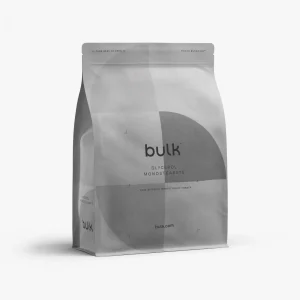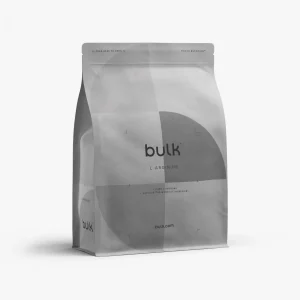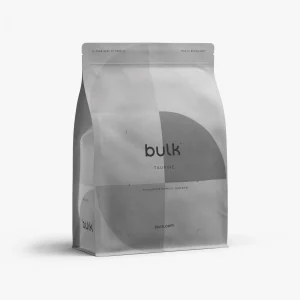Share This Article
Established in 2006, Bulk Powders (now known as BulkUK ) began operations in an unfinished spare bedroom. Every athlete and every individual has since then relied on us to provide the nutrition and inspiration they require to not only achieve their goals, but to go above and beyond them.
The fact that we were regular gym goers made us aware that things could be different and better in the future. We wanted to get more out of the supplements that were available at the time, so we decided to change the game and create transparent and industry-leading products that anyone could trust – from athletes to casual gym goers – and that anyone could trust. Our mission to improve sports nutrition and overall well-being for all people began with this initial inspiration.
Let’s fast forward to the present day and discuss As a result of our parents’ loan of £3,000 on their credit card, bulkUK has grown to become one of the world’s largest and fastest-growing active nutrition companies. By 2021, we will have shipped more than 10 million products to customers who are looking for products to assist them in their health and fitness journeys. And we haven’t even begun to scratch the surface of the problem.
Whatever your level of athletic ability or weekend warrior status, we believe that sport, health, fitness, and nutrition are for everyone, regardless of age, gender, or occupation. A healthy way of life is a never-ending process that can never truly be completed.
As a result, we are committed to researching and developing world-class nutrition for you at every stage of your fitness journey. To achieve this, it is necessary to deliver the highest-quality products in the most environmentally friendly packaging possible while maintaining a high level of flavour.
We manufacture over 80% of BulkUK products in our very own state-of-the-art manufacturing facilities, which allows us to be confident in the quality of our products and services. Our conviction that transparency should always be at the heart of our products remains true today, in addition to other things.
Anyone who wishes to make a positive change and become a member of the bulkUK community can benefit from our knowledge and expertise, which is available to inspire and empower them. We are hoping that you will be able to attend.
Glycerol Monostearate
Ethylene glycol monostearate (GMS), also known as Glycerol Monostearate, is a monoglyceride that is commonly used as an emulsifier in foods. [3] Flaky powder with a sweet taste and a white, odourless appearance that is highly hygroscopic in nature is what it takes the form of. It is the glycerol ester of stearic acid in terms of chemistry.
Anticaking, thickening, and preservative agents are all used in the food industry. GMS is also used as an emulsifying agent for oil, wax, and solvents; a protective coating for hygroscopic powders; an anti-solidification and control release agent in pharmaceuticals; as a resin lubricant; and as an anti-foaming agent for rubber tyres. It’s also found in cosmetics and hair-care products, among other places.
GMS is a common ingredient in baking preparations because it gives the food more “body.” It contributes to the smooth texture of ice cream and whipped cream to a certain extent. It is sometimes used in the baking industry as an antistaling agent.
GMS can also be used as an additive in plastics, where it acts as an antistatic and antifogging agent, as well as in other applications. This is a common practise in the food packaging industry.
Here’s a preview of Glycerol monostearate by BULKUK:
L Arginine
An -amino acid, also known as l-arginine (abbreviated Arg or R), arginine is required for the biosynthesis of proteins. This compound contains an amino group, a carboxylic acid group, and a side chain made up of a 3-carbon aliphatic straight chain that ends in a guanidino group as well as an amino group. In solution at physiological pH, the carboxylic acid is deprotonated (-COO), the amino group is protonated (-NH3+), and the guanidino group is also protonated, resulting in the formation of the guanidinium form (-C-(NH2)2+), which transforms the amino acid into a charged, aliphatic amino acid. It serves as a precursor in the biosynthesis of nitric oxide, which occurs in the body. The codons CGU, CGC, CGA, CGG, AGA, and AGG are used to encode this protein.
A person’s developmental stage and health status determine whether or not arginine is classified as a semiessential or conditionally essential amino acid for that individual. Preterm infants are unable to synthesise or produce arginine on their own, making the amino acid an absolute necessity for their nutritional development. The majority of healthy individuals do not require arginine supplements because it is found in all protein-containing foods and can be synthesised in the body from glutamine through the use of citrulline.
Here’s a preview of L arginine by BULKUK:
Taurine
Taurine (/tri/), also known as 2-aminoethanesulfonic acid, is an organic compound that is found in high concentrations in the tissues of animals. A major constituent of bile, it can be found in the large intestine, and it can account for up to 0.1 percent of the total weight of a person’s body. After the Latin taurus (a cognate of the Greek o), which means bull or ox, it was named after the German scientists Friedrich Tiedemann and Leopold Gmelin, who discovered it in ox gall in 1827 and first isolated it from ox bile the following year. Edmund Ronalds made the discovery that it was present in human bile in 1846.
It performs a wide range of biological functions, including bile acid conjugation, antioxidant activity, osmoregulation, membrane stabilisation, and modulation of calcium signalling. It is necessary for the proper functioning of the cardiovascular system, as well as the development and function of skeletal muscle, the retina, and the central nervous system.
Here’s a preview of Taurine by BULKUK:



